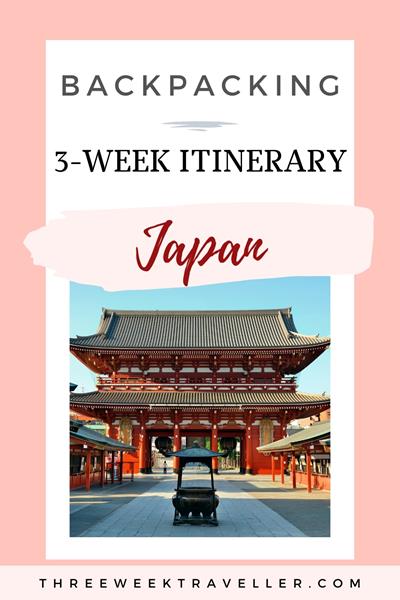Best technologies, sushi, cherry blossoms, and Mount Fuji are just a few things that stand out in Japan when you are making a decision on where to go on your 3-week holiday.
What I love about Japan is that you can experience very different adventures depending on the season you visit. But, one thing that is constant is the tasty Japanese cuisine.
Some people might argue that three weeks is quite a long time to spend in such a small country. But it’s not about the size. It’s about what this little place in East Asia can offer its visitors.
We don’t take 3 weeks of vacation time lightly on this site. We value them; they are sacred, and we understand that they should be spent well because you earn them. This article is jam-packed with helpful information that will guide you in writing your 3 weeks in Japan itinerary or help you decide why spending your vacation here is super worth it.
We will discuss things you should know, such as how to make sure you don’t come as offensive to the locals, how to navigate around Japan, where to go, attractions not to miss, and, of course, where to eat in Japan. So, stick with me!
TRAVEL TIPS BEFORE GOING TO JAPAN
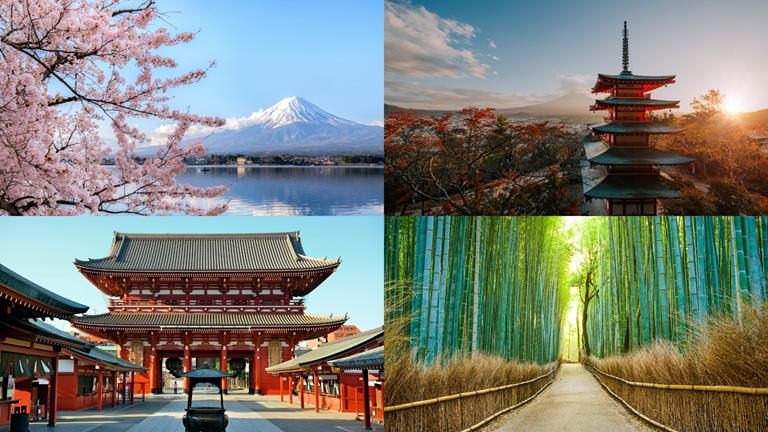
Before you book and pack anything, take a look at these tips before you go to Japan. To some, they might experience massive culture shock when visiting Japan. These tips might be helpful in writing an itinerary and blending in during your trip.
When is the best time to go to Japan
I don’t think “anytime” is the best time to go to Japan. Japan is so prone to typhoons, especially between May and October, which can affect your travel plans. On the other hand, this is the low season, meaning businesses related to tourism often run great discounts during this time.
If you want to maximise your trip, though, and imagine yourself under the sun most of the time, it’s best to visit Japan between November and April. Remember that Japan experiences four (4) different seasons.
This means you can ski in the winter, surf in summer, and enjoy the chilly but comfortable temperature of spring, where you can enjoy the famous Cherry Blossoms season.
Are 3 weeks enough for Japan
20 days in Japan is plenty. This will allow you to travel slowly and visit more than just the big cities. You will have enough time to go to less popular spots and really immerse in the culture and meet locals.
Instead of taking domestic flights, you can really enjoy the metro and train system of Japan and travel with a more scenic journey. If you have too much time, you can always hop on a flight to South Korea if you’re curious.
READ >> 3 weeks in Japan and South Korea itinerary
What to pack
What you must pack for 3 weeks in Japan depends on the season you plan to go since it gets quite cold during winter. One that is a must is clothing that can cover up your tattoos if you have any, which can also be used when you need to cover up for visiting temples.
We have a general packing list for a 3-week trip, but we also have a spring packing list and winter packing list.
Common cultural rules
Japanese culture is one of the world’s most polite, respectful, and considerate people. Of course, there are always bad apples. There could be many reasons why the Japanese appear so respectful, especially to strangers or visitors (of their home or their country).
But what’s important to remember is how to be respectful to the people and culture of Japan. Here are some basic tips for common cultural rules in Japan:
- Do not tip and spit on the ground
- Cover your tattoos
- Remove shoes before entering someone’s house
- Talk quietly in public places
- Bow when greeting, saying thank you, excuse me, or I’m sorry
- Learn basic Japanese words – thank you, hello, how much, sorry, excuse me
How to get around
Japan has one of the world’s best, most reliable, and most efficient public transportation. The trains, buses, ferries, and even planes are on time. Every time they get delayed, expect an apology if you are a worker, you can get proof to show your boss why you are late.
Not only are they on time, but they are also the most affordable way to get around – especially with the trains. There are many different kinds of public transportation passes to choose from depending on your needs and travel plans.
For example, you can get unlimited passes within cities or major cities. You can also use one to travel to another city or province.
For a 3-week stay in Japan, you can get the JRPass, which gives you unlimited passes to take the Shinkansen and JR trains, buses, and even ferries. You can either buy them online or at some stations, but the price can be higher. You can always ask your hotel receptionist to assist you in getting one online.
Convenience store visit is a must
This may be one of the reasons why I wanted to visit Japan. The convenience store is a must-visit. Not because they offer unusual promos or features. The simple answer is the fact that these convenience stores are more than just mini-stores.
They really embody their name with a number of options for quick food to grab at any time of the day. Plus, they are affordable and great for those travelling on a budget,
But many tourists find these stores impressive because it’s like a gateway into exploring Japanese food and snacks without worrying about sanitation and “how long have they been out here on display?”. From cold salad to warm noodles, breakfast to dinner, they are all here.
Currency and payment method
In a country where you first heard about bullet trains, the country with the first cellular network in history, the inventor of the rice cooker, QR code, selfie stick, and even your beloved emojis.
With all these, you would think that Japan is very high-tech-tech, but they prefer cash when it comes to payment methods.
Don’t worry; hotels, fancy restaurants, and big shopping places accept credit cards. However, cash is still the king of Japan. If you dream of eating in small ramen houses or trying out the cool vending machines, using public transportation – you will need more cash than you thought.
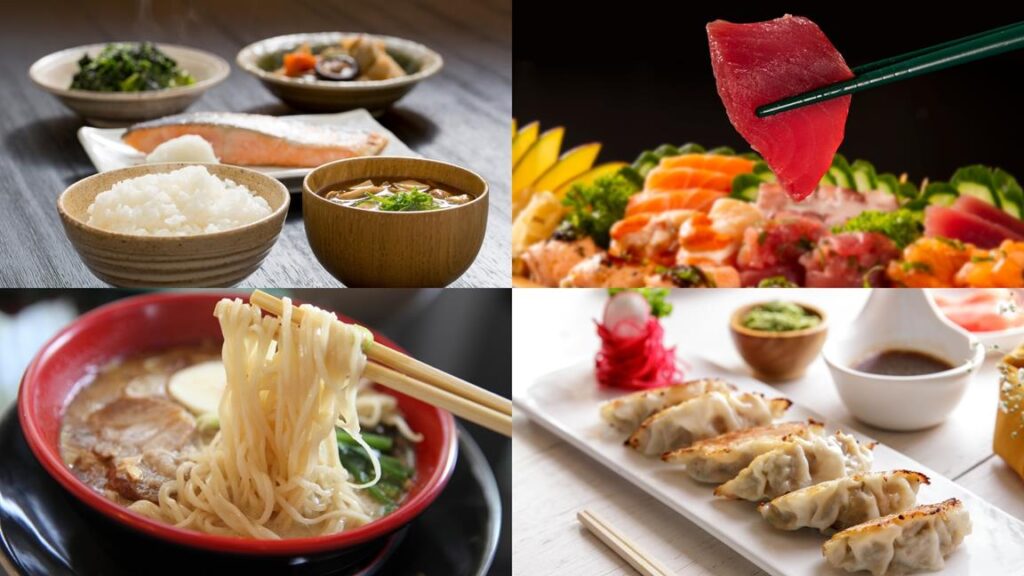
Language
I wouldn’t say there’s a massive language barrier in Japan. It is believed that 20-40% of Japanese can speak at least basic English. However, many of them are self-conscious and shy in public.
More and more, younger generations speak relatively great English and are comfortable extending help to tourists.
On the other hand, make sure to download a translator app specifically for Japanese to your language so you can use it without mobile data.
And again, it will really go a long way if you learn some basic Japanese phrases like greetings, asking how much a thing is, where the train/bus/shop is, etc. It will also show respect for their culture.
Internet access
Mobile data in Japan is expensive, and free public Wi-Fi is not as reliable or is often used for limited use. You can purchase an e-sim or data package or get this easy-pocket wifi to rent for your stay in Japan. You can compare whether using your roaming services is cheaper or access the local provider.
Visa
Japan is somehow strict when it comes to travel visas. Passport holders of countries in most Americas, Europe, UAE, South Africa, Australia, South Korea, New Zealand, Thailand, Cambodia, and Indonesia can enter and travel around Japan visa-free between 15 days up to 180 days.
Other basic travel tips
PINNED MAP OF MUST-SEE PLACES IN JAPAN
Click the enlarge button on the top right corner. Credit: map data: Google
3 WEEKS IN JAPAN ITINERARY
Before anything else, since Japan experiences four seasons a year, it’s important for you to decide when to visit Japan.
For example, summer is great since it’s the only time you can hike Mount Fuji, but it gets really hot with such high humidity, while in spring, it’s cooler, cherry blossoms are popping, and you can enjoy the spring festival.
During fall or autumn, the trees are just magnificent during their turn of colour, plus the temperature is much bearable than in summer.
And lastly, winter can be cold, meaning you need to pack warm clothing, but this also means you can enjoy winter activities such as skiing, the perfect time for an onsen bath, and the most beautiful winter festival in East Asia.
Package Tours
A great to travel around Japan is booking a package tour where you pass on all the job to a tour organiser and they arrange everything for you. The price usually includes the cost of transportation, tours and tour guides, accommodation, tickets, and sometimes food.
Since it can be confusing to travel around Japan because of communication, it might be more suitable to book this kind of tour to make your trip more comfortable. You don’t need to book the entire 3 weeks in Japan, you can book 10 days on a tour and spend 10 days on your own.
3 weeks in Japan in Spring
If you are considering visiting Japan during spring, I assume cherry blossoms have something to do with it. First, remember that the best time to see these beautiful trees is around the second week of March.
So, either start your 3 weeks in Japan at this time or if you want to enjoy the Takayama Spring Festival, it happens around the second week of April. Also, this is one of the busiest times in Japan for tourism, so keep that in mind.
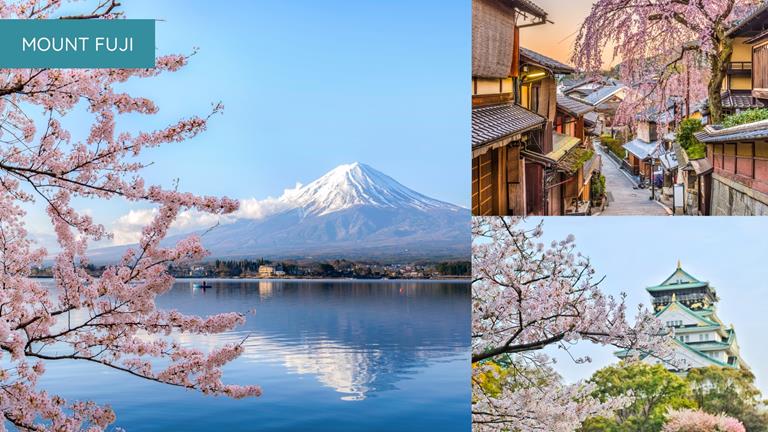
This means spring in Japan for 3 weeks should be between the third week of March and the second week of April.
- Day 1-3: spend this time exploring Tokyo, getting a train/subway ticket or passing local money, and enjoying the capital, where you can visit many places such as Yayoi Kusama Museum and Senso-ji.
- If you prefer to see cherry blossoms here, you can visit Shinjuku, Tokyo: Shinjuku Gyoen or do day trips to Nikko and Kamakura. If you are planning to travel with kids or want to be a child at heart for one day, don’t forget a visit to Tokyo Disneyland.
- Day 4-10: Head to Yamanashi, where you can visit Yamanashi’s Fuji Motosuko Resort for amazing cherry blossoms. You can also go hiking, horseback riding, golfing, and other fun outdoor activities. And, of course, this is where you can adore Mount Fuji. Finish your stay here with a visit to Hottarakashi Onsen.
- Day 11-16: Head to Nagoya to visit Nayoga Castle, Noritake Garden, and Tokugawa Art Museum. From here, you can take day trips to Kyoto and Osaka to visit Eikando Temple, Tofukuji Temple, and Universal Studio. You can visit the Legoland Resort, SCMaglev and Railway Park, and Tobishimamura Onsui indoor pool from Nagoya.
- Day 17-21: Make your way to Takayama to celebrate Takayama Spring Festival. If you haven’t seen the cherry blossom trees yet, you can definitely enjoy them here as well.
3 weeks in Japan in Summer
Summer in Japan is pretty great. However, the heat and humidity can be off-putting to some.
If you don’t mind this, you can hike Mount Fuji during this season, which is only open in summer from July to September. You can also try surfing, visit the best water parks, and do lots of activities to cool you off.

- Day 1-4: Start in Okinawa, an island south of the mainland or northeast of Taiwan. This island is filled with water parks and resorts from which you can choose. There are over 100 beaches you can cool off during this hot season. Manza Ocean Park, Cape Maeda, Shurijo Castle, and Oodamari Beach to name a few places in Okinawa.
- Day 5-8: Make your way to Hiroshima, if you love history, you can visit the Atomic Bomb Dome and Hiroshima Castle. You can take the ferry to the beautiful Itsukushima Shrine and Mount Misen Observatory.
- Day 9-14: Head to Osawa, where you can take day trips to Kyoto, Nagoya, and Hamamatsu. Make sure to get yourself a train/subway pass, which will be very useful and affordable.
- Day 15-21: Explore Tokyo. Don’t forget to visit Tokyo downtown, Shibuya city, Senso-ji Temple, the National Museum of Emerging Science and Innovation, and of course, hike Mount Fuji.
3 weeks in Japan in Fall/Autumn
Autumn is such a beautiful season in Japan. The trees are turning colours, the temperature is cooler, and walking around the big cities and hiking is blissful. However, there are only a handful of places to enjoy autumn in Japan.
To make sure it’s worth your trip, you should add major attractions to your 3 weeks in Japan itinerary, such as the capital city, historical sites, and food-y your way around.
Read our list of the best places to spend the fall or autumn season for your 3-week trip.
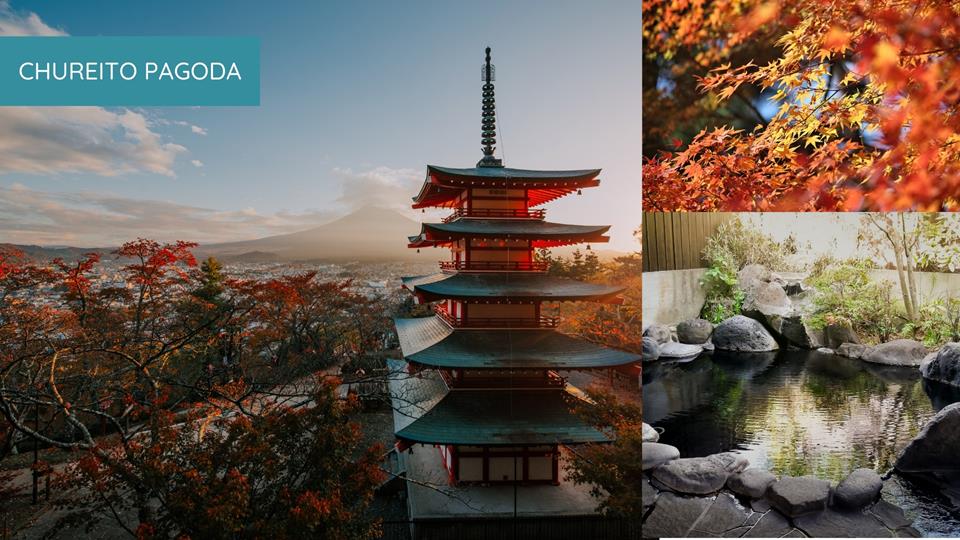
Start your trip at around the middle of September or even the end of the month. It’s not too cold yet but also not scorching hot. Good enough for a light jacket and closed shoes.
- Day 1-4: Start in Tokyo, gather yourself, get local currency, and get familiarised with how things work in Japan. Enjoy downtown Tokyo with local transportation, visit some clubs if that’s your vibe, or simply enjoy different parks and food in the city. Don’t forget to visit Fuji Five Lakes for awesome trees with autumn colours.
- Day 5-7: Base yourself in Kyoto; from here, you can visit the historical region of Hiroshima and then explore Osaka and Nagoya. Visit Mount Hiei, Ama Site Park, and Osaka Castle.
- Day 8-12: Head to the Japanese Alps; while it might still be too early to ski, this area is stunning, filled with trees perfect for your autumn vibe. Here, you can do lots of hiking and outdoor activities.
- Day 13-21: Fly to the island of Hokkaido. Fall colours in this region are nothing like those elsewhere in Japan. You can also visit the island’s northern part and see Abashiri Drift Ice. Don’t forget to visit an onsen, the outside temperature is perfect for this activity. You can either try indoor or outdoor onsen.
3 weeks in Japan in Winter
Winter is also a great time to spend 3 weeks in Japan. Yes, it can be quite cold, but you can do so many fun activities such as skiing and snowboarding, outdoor skating, onsen baths, and even visiting the drift ice.
Pack some warm clothes because it can get very cold during winter, and good quality jackets and footwear to stay warm can be pricey in Japan. We also have a list of the best destinations for a 3-week winter trip and a packing list for a 3-week winter vacation.

- Day 1- 6: If you are a skier or do any winter activities, I suggest you start your 3 weeks in Japan here. Near Tokyo, you have Hakuba Iwatake Mountain Resort & Ski Field and Nozawa Onsen Snow Resort, while Niseko Moiwa Ski Resort in Hokkaido.
- Spend a few days enjoying not only some fun white powder but also the natural beauty of Japan during winter. Don’t leave without visiting the north part of Hokkaido and seeing Abashiri Drift Ice.
- Day 7-14: After finishing winter sports, it’s time for your usual tourist activities, such as visiting Hiroshima for history junkies. The best way to do this is to place yourself in Osaka or Kyoto – both cities can take you to Hiroshima but simultaneously have so much to offer for you to enjoy. You can even sneak a trip to Nagoya, where they have a Castle, Art Museum, and Public Aquarium.
- Day 15-21: This is the time to enjoy Tokyo, its exciting nightlife, fun markets, and amazing local food to try. If you haven’t, make sure to visit an onsen that will really warm you up and is the best way to wrap up your winter holiday in Japan.
THINGS TO DO AND SEE IN JAPAN
First, let’s talk about the must-see places in Japan. In this way, you can decide the best time to visit Japan according to what you want to do. This list will also help you create a 3-week itinerary for Japan that will save you time and knock places off your list in a time-saving way.
Tokyo
- Explore top sites in Tokyo – custom full-day tour or a tour with a licensed guide
- Shinjuku Gyoen National Garden
- Disneyland in Tokyo – get a day pass
- Tokyo Tower
- See a Sumo Wrestler – you can challenge a sumo wrestler too
- Tokyo Skytree
- Digital Art Museum – get your ticket in advance
- Imperial Palace
- Enjoy Japanese cuisine by – sushi making or go ramen tasting or join a food and culture tour
- Senso-ji
- Go Kart Experience – right through the city centre, check the price
- Meiji Jingu
- Day trip to Mount Fuji (check the season schedule beforehand) – combo with Hakone and Lake Ashi or this more affordable Mount Fuji tour or go on a Hakone cruise
- Enjoy the nightlife by doing – bar hopping or eat and drink tour
Kyoto
- Explore Kyoto – on a bike tour (with lunch) or e-bike tour or with a licensed guide
- Fushimi Inari Shrine
- Higashiyama Jisho-ji
- Kyomizu-dera
- Lanterns Night – join a discovery tour
- Eikando Temple
- Rikugi Garden
- Bamboo – Higashiyama Sanjo
- Learn about Japanese culture – join a zen meditation with locals or book a samurai experience or be part of a traditional tea ceremony
- Kinkaku-ji
- Arashiyama
- Learn about Geisha – private dinner with a Geisha or explore the Geisha district
- Ryoan-ji
- Tofukuji Temple
- Discover Japanese Cuisine – go on sake experience tour or night foodie tour or ramen cooking class or all-inclusive local eats tour
- Nishiki Market
- Mount Hiei
- Day trip to Hiroshima and Miyajima – check the tour price
Hiroshima
- Peace Memorial Park – book a day trip
- Itsukushima Floating Torii Gate
- Atomic Bomb Dome
- Shukkein
- Hiroshima Peace Memorial Museum
- Hiroshima Castle – with a combo visit to Hiroshima Castle
- Yamato Museum/Maritime Museum
- Hiroshima MOCA
- Explore Hiroshima on a bike – read the reviews
- Itsukushima Shrine
- Try traditional archery – book a tour
- Try Kimono
Osaka
- Osaka Castle
- Universal Studios in Japan
- Umeda Sky Building
- Shitennoji
- Osaka Auarium Kaiyukan
- Abena Harukas
- Shinsekai
- Mozu Tombs
- Sumiyoshi Taisha
Nagano
- Matsumoto Castle
- Zenko-ji Temple
- Kamikochi
- Shiga Kogen
- Daio Wasabi Farm
- Happo Pond
- Togakushi-Jinja
Yamagata
- Mount Zao
- Risshakuji Temple
- Zao Onsen Ski Resort
- Okama
- Kajo Park
- Bunshokan
Sapporo, Hokkaido
- Sapporo Beer Museum
- Sapporo TV Tower
- Moerenuma Park
- Hokkaido-Jingju Shrine
- Sapporo Clock Tower
- Shiroikoibito Park
- Sapporo Kokusai Ski Resort
- Mount Miowa
- Mount Yotei
- Fukidashi Park
- Yukichichibu Onsen
Hakone
- The Hakone Open-Air Musuem
- Hakone Shrine
- Owakudani
- Lake Ashi
- Hakone Ropeway
- Okada Museum of Art
Naoshima Island
- Benesse House Museum
- Chichu Art Museum
- Naoshima Public Bath
- Shodo Island
- Ando Museum
Motoyama
- Kizenzan Park
- Asemi River
- Mount Shiraga
- Yoshinobu Rice Terraces
- Vine Bridges in the Iya Valley
- Mount Miune
WHERE TO STAY IN JAPAN
This list can help you decide the best accommodations during your trip that suits your budget. It’s also arrange per city to make things easier.
Tokyo
- Affordable: Hotel Owl or bnb Hostel
- Mid-range: Hotel GrandBach or Shiomi Prince Hotel
- Luxury: The Capitol Hotel or The Gate Hotel
Kyoto
- Affordable: K’s House Travelers Hostel or Chinsun Premium or Sotetsu Fresa Inn
- Mid-range: Hotel Emion or The Royal Park Hotel or Sanco Inn
- Luxury: MONday Apart Premium or Mercure Kyoto Station or Via Inn Prime
Hiroshima
- Affordable: Capsule Hotel Cube or Santiago Guesthouse
- Mid-range: Daiwa Roynet Hotel or Candeo Hotels
- Luxury: Hilton Hotel or Sheraton Grand Hotel
Osaka
- Affordable: Shinsaibashi Arty Inn or Cabin & Capsule Hotel
- Mid-range: Hotel Cordia or Waqoo Shitaderamachi or Del Style by Daiwa Roynet Hotel
- Luxury: Oyado Nono or Hotel Intergate or The Bridge Hotel
Sapporo, Hokkaido
- Affordable: Tune Hostel or Tmark City Hotel
- Mid-range: Hotel Amanek or Toyoko Inn
- Luxury: Hotel Nets or Tenza Hotel and Sky Spa
Nagano
- Affordable: Hotel MetropolitanNagano or Sotetsu Fresa Inn
- Mid-range: Anise Garden or Matsumoto Hotel Kagetsu
- Luxury: Hotel Karuizawa Cross or Karuizawa Prince Hotel West or Hotel Wellies
Hakone
- Affordable: Manten-no-Hoshi or Hakone Hostel 1914
- Mid-range: Hakone Guest House Gaku or Hakone Hotel or Mount View Hakone
- Luxury: Meibi Yumoto or Villa Hakone or Fujiya Hotel
Naoshima Island
- Affordable: Season 1
- Mid-range: Takamatsu Guest House Akane
- Luxury: Naoshima Juju Art House
Motoyama
- Affordable to Mid-range: Smile Hotel or Green Rich Hotel or Ana Crowne Plaza
SUMMARY OF 3 WEEKS IN JAPAN ITINERARY
3 weeks in Japan can be plenty of time for some or too long for others or even too short for some people. The best way to make sure you are making the most out of your 3 weeks vacation is to plan your trip but make wriggle room for changes and things you don’t expect that can happen. Let your fun side entertain some unplanned trips and activities.
Japan is filled with so many things you can enjoy and do. And if you find yourself bored for some reason or have time to spare, don’t forget, South Korea or other East Asian countries are just a short flight away.
I hope you enjoyed this 3 weeks in Japan itinerary and that I’ve helped you create a fun and suitable holiday for you in this part of the world.
SAVE THESE TIPS AND ITINERARY ON YOUR PINTEREST:
